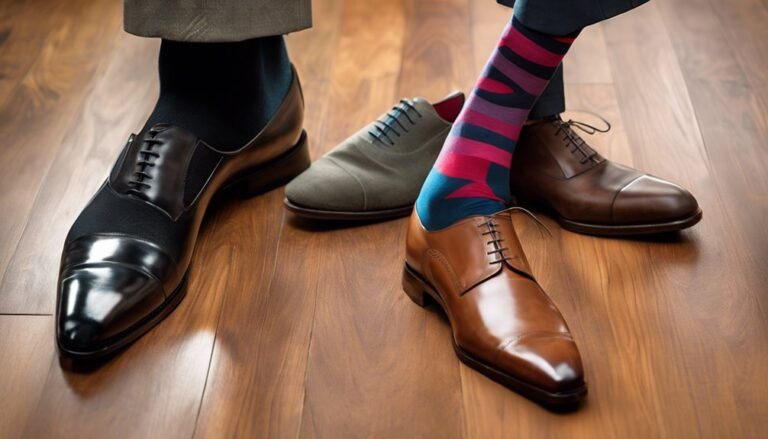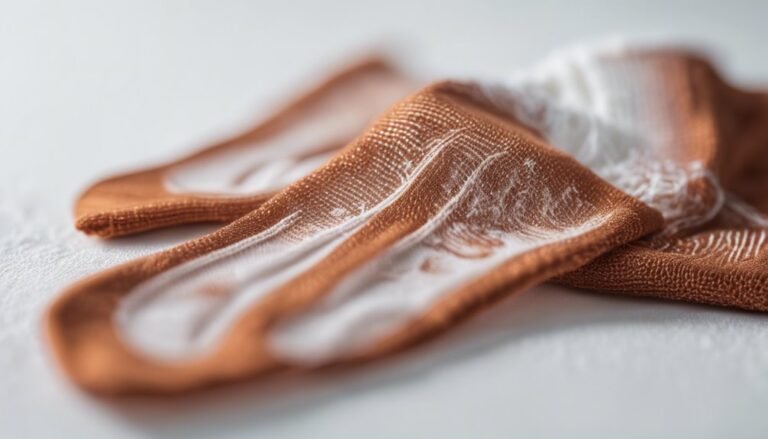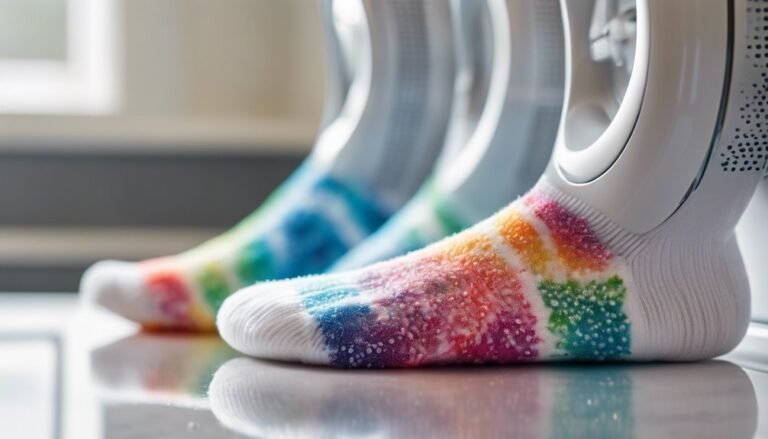Why Some Socks Smell Worse Than Others: The Science of Foot Odor
Imagine this: You come home after a long day, kick off your shoes, and are immediately hit by an unpleasant smell. You wonder why some socks seem to have a stronger odor than others.
The answer lies in a combination of sweat, bacteria, and the fabric composition of the socks. Sweat provides moisture and nutrients for bacteria like Corynebacterium, which produce odor. The material of the socks also plays a crucial role; cotton tends to retain dampness, whereas wool is more effective at absorbing odors.
Factors such as high ambient humidity and genetic predispositions further complicate the issue. Despite various efforts, persistent odor can remain a frustrating challenge.
Understanding these elements can deepen your knowledge of foot odor management and help you tackle the problem effectively.
The Role of Sweat in Foot Odor
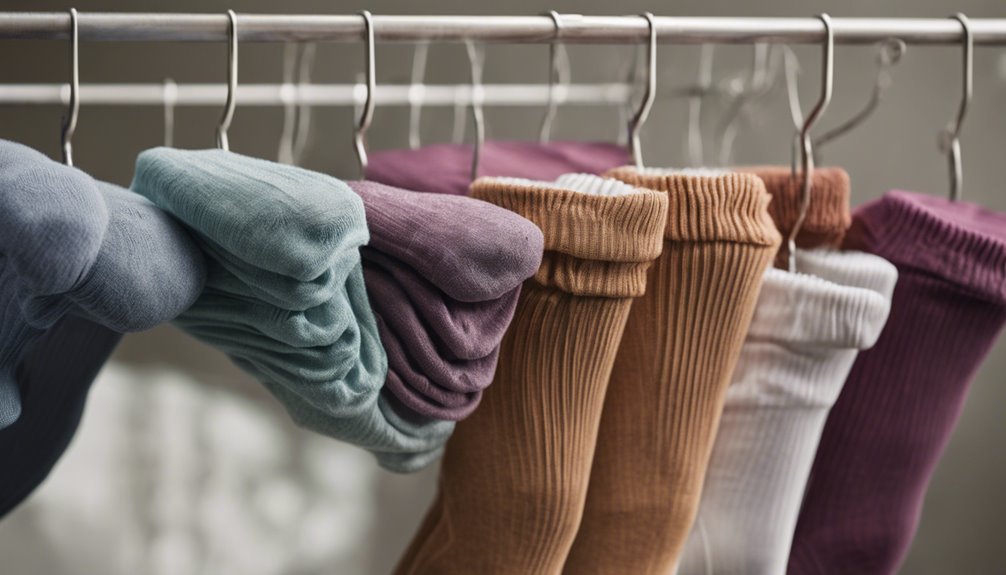
When it comes to understanding foot odor, sweat plays a pivotal role. Your feet contain numerous sweat glands, and the sweat composition is primarily water with small amounts of salt, urea, and lactic acid. This unique mixture creates a moist environment, essential for maintaining foot temperature and skin flexibility. However, foot hygiene is vital to manage this moisture effectively. Inadequate foot hygiene can lead to sweat accumulation, providing an environment conducive to odor production. Regularly washing your feet with mild soap and guaranteeing they dry thoroughly can mitigate odor risks. Additionally, wearing breathable socks and shoes allows for proper air circulation, helping manage sweat levels. Prioritizing these practices guarantees your pursuit of freedom is not hindered by unpleasant foot odor.
Bacteria: The Culprits Behind the Smell
You've probably noticed that foot odor is more pronounced after wearing shoes for extended periods, and bacteria are largely responsible for this. These microorganisms thrive in moist environments like sweaty feet, breaking down sweat into compounds that produce a characteristic odor. Additionally, the material of your socks can either exacerbate or mitigate bacterial growth, affecting the intensity of the smell.
Bacterial Growth Conditions
Although often overlooked, the environment inside your shoes creates an ideal setting for bacterial proliferation, which is the primary cause of foot odor. Bacteria thrive in warm, moist conditions, and your shoes often provide just that due to the enclosed space and limited airflow. Environmental factors such as humidity and temperature directly influence bacterial metabolism, accelerating their growth. This metabolic activity results in the breakdown of organic materials, releasing volatile compounds responsible for unpleasant odors. Your choice of footwear and socks can exacerbate these conditions, hindering your freedom from offensive foot smells. Opt for breathable materials to reduce moisture buildup and mitigate bacterial activity. Understanding these conditions empowers you to make informed decisions, freeing you from the constraints of unwelcome odors.
Sweat and Odor Connection
Understanding the connection between sweat and odor begins with recognizing that bacteria are the primary culprits behind the unpleasant smell. Your feet produce sweat that is largely composed of water, electrolytes, and trace substances. This sweat composition creates a conducive environment for bacterial proliferation. When these microorganisms break down sweat, they release volatile organic compounds, affecting your odor perception.
The bacteria responsible for foot odor mainly belong to the genera Corynebacterium and Staphylococcus. These bacteria metabolize sweat's organic components, producing acids with strong, distinctive odors. The degree of odor perception varies based on factors like individual sweat composition and bacterial diversity. By acknowledging the role of bacteria, you can understand how foot odor manifests, empowering you to make informed choices about managing it effectively.
Sock Material Influence
While the biological activity of bacteria is a well-known contributor to foot odor, the materials in your socks can greatly influence bacterial growth and, consequently, odor levels. Cotton breathability is a critical factor. Cotton allows for superior air circulation, reducing moisture accumulation, which bacteria thrive on. However, the downside is cotton's inability to wick moisture effectively, potentially leading to a damp environment. On the other hand, synthetic fibers offer remarkable durability and moisture-wicking capabilities, drawing sweat away from the skin. Yet, their limited breathability might trap heat, creating a warm, humid setting conducive to bacterial proliferation. The choice between cotton and synthetic involves balancing breathability and durability to minimize bacterial growth, granting you the freedom from unwanted odors.
How Different Fabrics Affect Odor
When considering foot odor, the type of fabric in your footwear and socks can greatly impact odor development. Fabric composition plays a significant role in how odors are retained. Natural fibers like cotton offer breathability, reducing odor retention by allowing air circulation. In contrast, synthetic materials such as polyester exhibit higher odor retention due to limited ventilation and increased moisture trapping. Wool, with its unique keratin structure, can absorb odors while also wicking moisture away from your skin. This balance makes it a favorable choice for those seeking odor control. Your choice of fabric influences how free you feel, as it dictates not only comfort but also the level of odor you might experience. With informed decisions, you can mitigate unwanted foot scents.
The Impact of Moisture Levels on Foot Scent
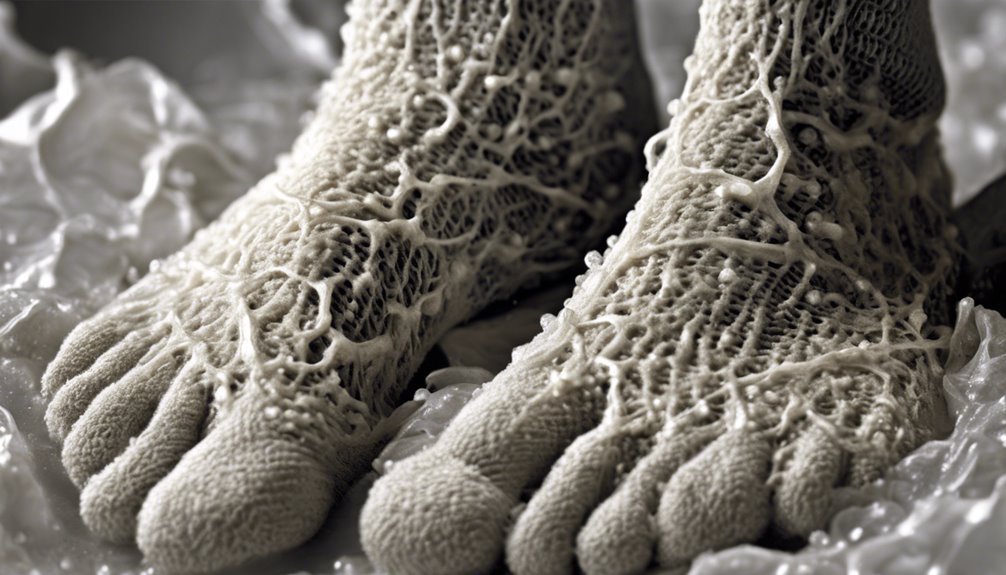
Understanding how moisture levels affect foot scent is essential, as sweat provides an ideal environment for bacterial proliferation, which is the primary cause of odor. You'll find that different sock materials have varying absorption rates, directly influencing moisture retention and subsequent bacterial growth. Additionally, ambient humidity plays a significant role in exacerbating or mitigating odor levels by altering the evaporation rate of sweat.
Sweat and Bacteria Growth
Although often overlooked, the intricate relationship between sweat and bacteria is central to foot odor, as moisture levels greatly influence bacterial growth on the skin. High moisture levels create an ideal environment for bacterial metabolism, leading to increased production of odor-producing compounds. When feet sweat, bacteria thrive, breaking down sweat into volatile compounds like isovaleric acid, contributing to the unpleasant scent.
Consider the implications:
- Unwanted attention from others
- Limited freedom to remove shoes in public
- Self-consciousness during intimate moments
- Increased laundry loads
- Frustration over ineffective solutions
Understanding this biological process empowers you to take control, liberating yourself from the constraints of foot odor. By managing moisture, you can disrupt bacterial proliferation and minimize these malodorous compounds, paving the way for a more confident stride.
Sock Material Absorption Rates
Several studies have shown that the type of sock material greatly affects its absorption rate, directly impacting moisture levels and, consequently, foot odor. Cotton socks, known for their high absorption rates, can retain moisture, creating an environment conducive to odor-causing bacteria. In contrast, synthetic materials such as polyester and nylon exhibit lower absorption rates, allowing for quicker evaporation of moisture, potentially reducing odor development. Sock composition plays an essential role in moisture management; wool, for instance, balances absorption and evaporation effectively, offering a natural odor control mechanism. For those seeking freedom from foot odor, understanding these material differences can empower you to make informed choices. The interplay of absorption rates and sock composition is significant in maintaining ideal foot hygiene and comfort.
Humidity's Role in Odor
When humidity levels increase, the conditions for microbial growth on the feet become more favorable, exacerbating foot odor issues. Elevated moisture fosters bacteria and fungi proliferation, intensifying malodor. Various humidity sources affect this dynamic, including environmental humidity and perspiration. Understanding these factors empowers you to manage foot scent more effectively.
Consider the implications:
- Increased bacterial activity: Higher humidity levels lead to more bacteria, worsening odor.
- Fungal growth: Dampness encourages fungi, contributing to a stronger scent.
- Personal discomfort: Excessive moisture can cause skin irritation and discomfort.
- Social embarrassment: Unpleasant odors may lead to self-consciousness and social anxiety.
- Freedom to choose: Controlling humidity sources offers the freedom to enjoy odor-free feet.
Biological Factors Influencing Foot Odor

Even though many factors contribute to foot odor, biological aspects play a pivotal role in its development. Genetic predisposition greatly influences the composition of bacteria on your skin, affecting odor intensity. If you inherit genes that foster certain bacterial strains, you may experience more potent foot odor. Additionally, your diet impact cannot be overstated. Consuming foods rich in sulfur, like garlic or onions, can alter sweat's chemical composition, exacerbating odor production. High protein diets might elevate ammonia levels, adding another layer to the scent profile. Understanding these biological influences provides insight into why some individuals experience more intense foot odor than others. By acknowledging these factors, you're empowered to navigate personal hygiene with informed choices, enhancing your freedom from unwanted odors.
Common Myths About Foot Odor
While understanding the biological factors behind foot odor offers clarity, it's equally important to address the misconceptions that often surround this common issue. Myth debunking is essential for promoting effective foot hygiene. Contrary to popular belief, foot odor isn't solely due to poor hygiene; it involves complex interactions between sweat and bacteria. Shoes alone don't cause odor; rather, it's the closed environment that fosters bacterial growth. Using deodorant isn't an all-encompassing solution, as it only masks the smell temporarily. Surprisingly, foot odor isn't necessarily linked to sweat quantity, but rather the type of bacteria present.
- Frustration: You've tried everything, yet the smell persists.
- Embarrassment: Social situations become unbearable.
- Judgment: Others assume your hygiene is lacking.
- Isolation: You avoid activities you love.
- Helplessness: Solutions seem out of reach.
Practical Tips for Reducing Sock Odor
Addressing sock odor requires a methodical approach that targets both moisture management and bacterial control. To begin with, optimizing sock storage is essential; make certain socks are stored in a dry, ventilated environment to minimize bacterial proliferation. Incorporate moisture-wicking materials in your socks to facilitate evaporation. For washing techniques, employ a high-temperature wash cycle to effectively eradicate bacteria. Use an antibacterial detergent to enhance microbial reduction. Rotating socks daily and allowing them to thoroughly dry between uses can greatly reduce odor accumulation. In addition, consider applying antimicrobial sprays or powders to your feet before wearing socks. By systematically controlling these variables, you'll experience greater freedom from unpleasant sock odor, promoting both comfort and confidence in daily activities.
Frequently Asked Questions
Do Colored Socks Smell Different Than White Socks?
When comparing colored socks to white ones, you might notice a difference in odor. This could be due to color retention treatments impacting fabric composition. Variations in material and dye processes can affect breathability and bacteria growth.
Can Diet Influence the Odor of Socks?
Your dietary habits can indeed influence the odor of socks. Consuming odor-producing foods like garlic or onions increases volatile compounds and sweat, exacerbating foot odor. Analyze your diet if seeking freedom from unpleasant sock smells.
Are There Specific Foot Exercises to Reduce Foot Odor?
You might wonder if foot exercises can reduce odor. While strengthening foot muscles doesn't directly affect odor, maintaining foot hygiene is key. Evidence suggests regular washing and drying can greatly aid odor prevention, supporting your freedom from unpleasant smells.
Does Foot Odor Vary With Age?
Foot odor can be a symphony of scents, shifting with age. Age-related bacteria and hormonal changes orchestrate this transformation, affecting scent intensity. Understanding these biological changes empowers you to manage odor, offering freedom from unwanted aromas.
Do Certain Shoe Materials Contribute to Sock Odor?
Yes, certain shoe materials greatly affect sock odor. Synthetic materials often lack breathability, trapping moisture and increasing odor absorption. Conversely, natural materials, like leather, typically allow better airflow, reducing moisture and limiting odor accumulation. Choose wisely for comfort.


